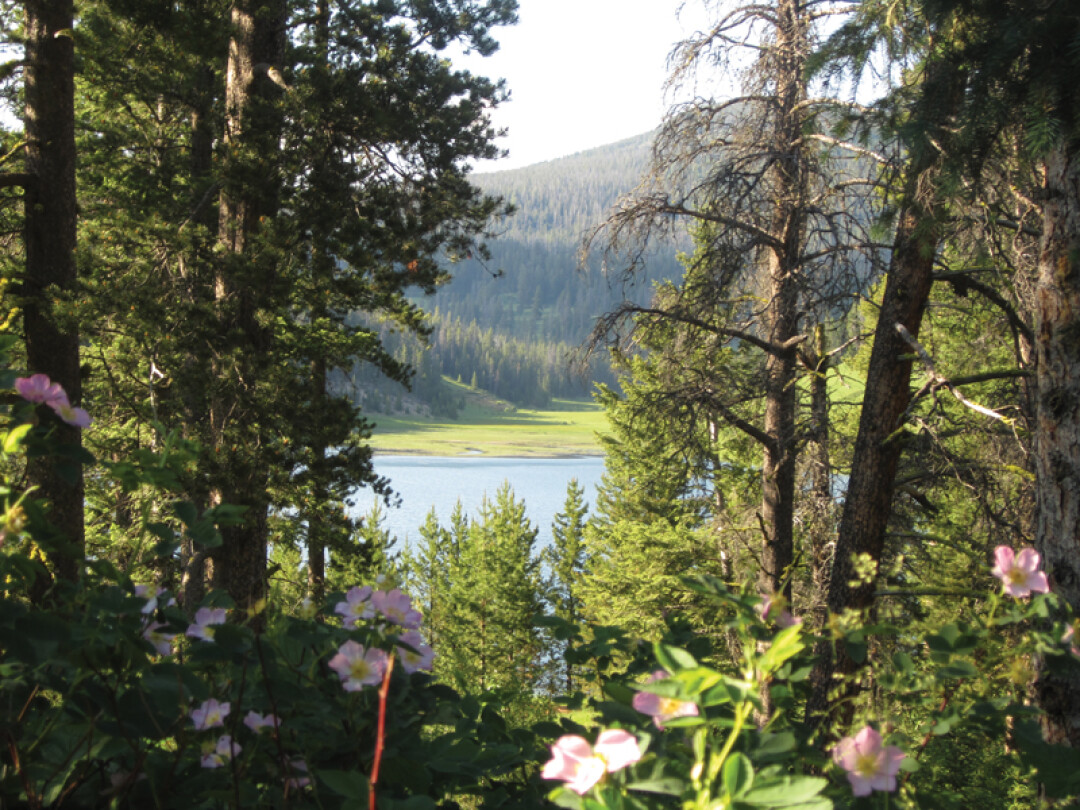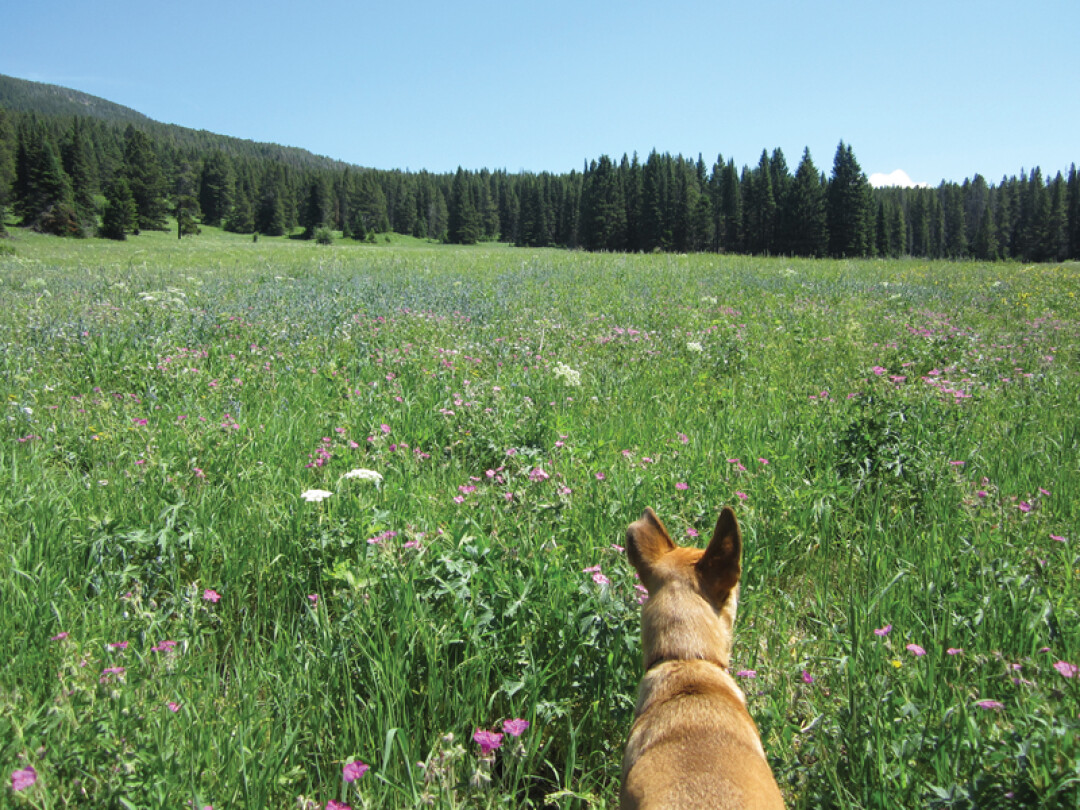Exploring the Value of the Gallatin Range from Past ‘Til Present
Kim Hightower | Saturday Aug. 1st, 2015

Some 40 years ago, Anne Banks and her friends – a group of strong, wilderness-loving women – hiked to Hyalite Lake. Standing there in the serenity of the wild, they couldn’t have possibly known the number of wild souls the mountains would draw to the Bozeman area in the coming years. The Gallatin Range is iconic here, and decades later, Anne’s group is still traipsing around out there, along with newer members who have joined over time. History repeats itself, but closely-spanned generations seem to evolve quickly and disperse, to live quite differently from one another– culturally and otherwise. But, the most interesting parallel in this story is, in fact, that of Anne’s life with those of younger people new to the Gallatin Valley. This generation of 20- and 30- and 40-somethings is just as awestruck and excited about exploring the mountains as Anne was when she arrived in 1972. And, neither generation ever tires. Out in the massive expanses of wildernesses in Montana, time stops and possibilities for further adventure seem endless. There is always a new hiking trail or ski meadow to discover. Living in the Greater Yellowstone Ecosystem and having a range as wild and vast as the Gallatins in our backyard is extraordinarily unique. Adventure is at our fingertips every day. I, like Anne, am always curious about what’s around the turn of the next switchback. If this wilderness came apart, we too would break – losing the chance for mountain adventure and with it, losing that innate sense of peace and feeling of sanctuary, age gaps falling away in the face of a shared passion.
Anne Banks and I are two women born 55 years apart, yet we are one in the same. I moved to Bozeman 43 years after she did, with my eyes on the mountains. Despite these age and time gaps, I was struck by her answers during an interview for the Gallatin Oral History Project. I identified with almost every single thing she said. The project aims to draw on the experiences of people recreating in the Gallatin Range 50 years ago up until now. Living among wilderness areas so full of opportunity, we may each experience the mountains differently, but we all have in common a love for the Gallatins and a passion for protecting this integral part of the Greater Yellowstone Ecosystem.
Back in the 70s, when Anne was a fledgling Bozemanite, she hiked and cross-country skied extensively in the Gallatins with a group called the Bozeman Women’s Activity Group (BWAGs) – and still does. She and her friends continue to get out there every Tuesday – and they have been joined by younger generations just as enthusiastic about wilderness recreation and just as passionate about conserving the mountains in which they play. Anne had hiked since she was a child growing up in Southern California, and she summited many 14-ers in Colorado with her husband into young adulthood. Soon after their Colorado adventures, they moved to Bozeman, where Anne immediately met and joined the BWAGS – her lifelong friends and adventure partners. She and her strong, passionate lady friends still get out into the mountains each week, without missing a beat. In winter, they rejoice when it dumps snow so they can cross country ski in Hyalite. In summer, they take advantage of every sweet sunny day to get up a mountain. An old story holds that one of the women’s husbands said, “the BWAGs are so tough that they wear burlap underwear.” Those are some tough ladies.
Despite our ages and varying life experiences, Anne and I are both independent, outdoor-oriented women who love the mountains and want to see things left wild, untouched. Both young when we moved here, she came with a husband while I, rolling into town 40 years later, struck out on my own. She may have hiked to Palace Lake and Windy pass in ’75, while in 2015 I have been out exploring Mystic Lake, mountain biking the trails around Hyalite, and reveling in the majesty of the mountains up Storm Castle. She hikes and cross-country skis with a group of fun-loving, determined women. I go up mountains and adventure largely with my Montana Dingo-Looking-Mutt named Sunny. I like the solitude and serenity, though I will often pick a buddy and the times that I do, I realize how nice it is to share the adventure and even the peace.
It’s that sharing word that seems key right now. We as members of the Greater Yellowstone Ecosystem love the Gallatins and want to share our love for adventuring in them with each other. Equally, we share a fierce desire to see these mountains unchanged and are driven to protect them. We want to keep playing in them for the next 50 years and beyond, until we have a closeness and familiarity with them that comes with years of time spent together, of seasoned exploring –a connection to the mountains like Anne and the BWAGS have found and maintained over decades.
But, it’s a double-edged sword. As Anne says, “The recreational amenities draw all these people… to come and stay here, but the pressure on the resources just increases.” As the number of people coming to live in the mountains increases, so does the volume of bodies and minds driven to protect them. But this same volume of bodies out in the mountains every day is the very thing that stresses the wilderness area. She says, “The Gallatins are the only range that originate in the park that don’t have wilderness protection. And we talk about them as if they’re the big sandbox for everybody who wants to play…” This sharing, in all senses of the word previously discussed, is both good and bad. We need a way to love the Gallatin Mountains and let them be, while still being able to enjoy them, experience the adventures they hold and find solace in their peace. Like Ben Harper says, “If you love somebody [or mountains], then you have got to set them free.” …But how?
At the end of the interview, Anne talks about how her friends are always reluctant to go back to ‘real life’ after a day spent in nature, hiking or skiing. She laughs that there is usually someone in the group who responds, ‘This is real life.’ And it couldn’t be truer. It is exactly how I feel every time I head back into town after a hike or an adventure in the wilderness. Wilderness is sacred to many, but somehow being in it is such a no-brainer at the same time, as palpably divine as it feels – because life out there is how it should be. We shouldn’t have to wonder what it must be like or, one day, to miss it. Wilderness should be close to us – it should be so close that it is part of our daily lives. And it should be there for us year in and year out – without the threat of destruction. If we protect it, it will protect us. It will save our souls and keep us grounded in perspective on the vast unpredictability and infinite yet fleeting beauty of life on Earth.
| Tweet |
